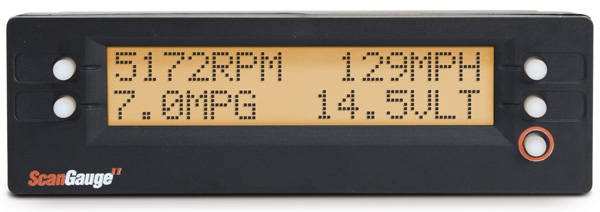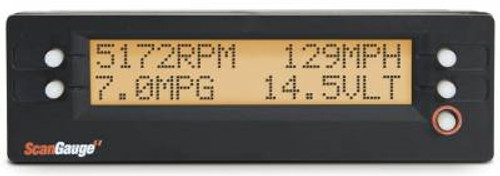Do you wish your car displayed things like; MPG, max speed, average speed, and distance to empty? With a ScanGauge all of these measurements are available in real time along with many other features and statistics. The ScanGauge also allows you to view and reset error/trouble codes that cause the check engine light to come on. For easy operation the ScanGauge has a large screen, backlight, custom backlight colors, making it virtually fully customizable. The gauge is a great addition to any vehicle, and will work on any 1996+ OBDII car. - Fits virtually anywhere
- Easy to use and install
- Connects in seconds
- Plug-and-play device
|  |
 Trip Features
The ScanGauge automatically tracks and stores data from 4 individual trips. The trip mode within the ScanGauge is most useful for improving fuel economy, and saving you money. The ScanGauge lets you try different driving techniques and routes and gives quick feedback on how they affect fuel consumption. The trip feature keeps track of most of the features noted above and also includes: | Digital Gauge Features
The ScanGauge is able to display up to 4 of a possible 12 gauges at one time. The gauges can easily be customized to display what you would like to see on your ScanGauge. All the optional display gauges are displayed in real time. - Fuel economy
- Fuel rate
- Battery Voltage
- Coolant temperature
- Intake air temperature
- Engine speed (RPM)
| - Vehicle speed (MPH and KPH)
- Manifold pressure
- Engine load
- Throttle position
- Ignition timing
- Open/closed loop
| |
- Time to empty
- Distance to empty
| | Fitment
The ScanGauge will work with Most OBDII 1996+ vehicles including; gas, diesel, hybrid, and propane powered vehicles, please see compatibility guide below. Compatibility guide User Manual |  |

Mod Category:
Performance
Mod Subcategory:
Tuning














